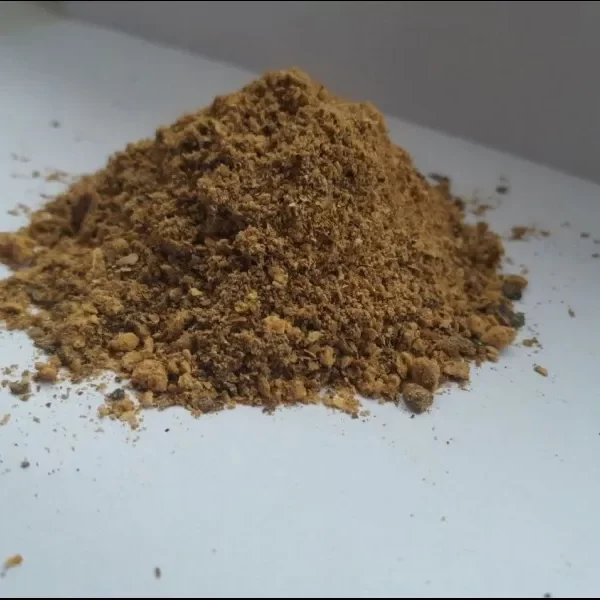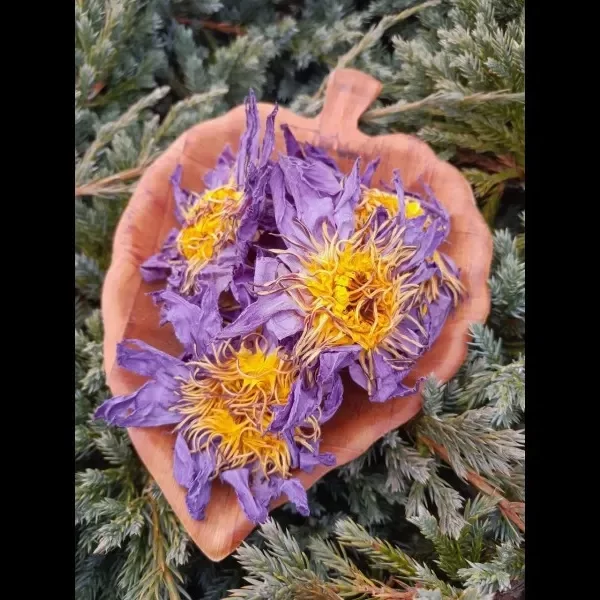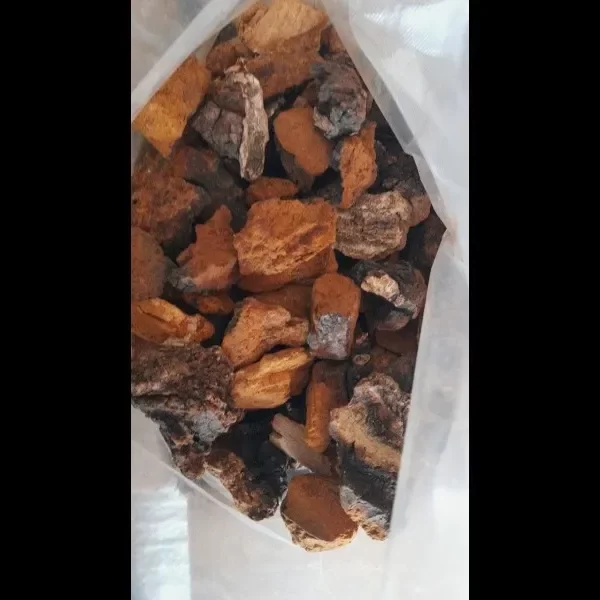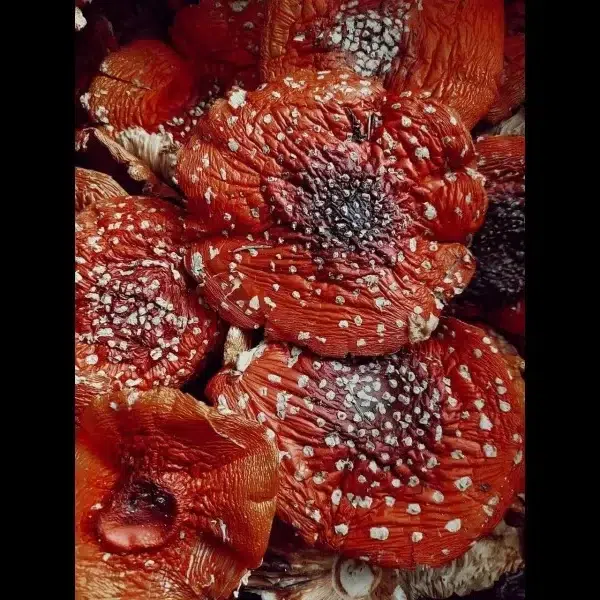The blue lotus, or Nymphaea caerulea, has long been admired for its calming effects and historical significance, especially within ancient traditions. Known as the Blue Egyptian Lotus or Blue Water Lily, it has been linked to relaxation, mental clarity, and tranquility. Recently, it has gained renewed interest as a natural wellness supplement.
Historically, blue lotus played a prominent role in Egyptian rituals, symbolizing rebirth and used in ceremonies. Traditional medicine valued it for its soothing properties, making it a favored choice for those seeking mental relaxation and emotional balance.
Potential Health Benefits and Uses of Blue Lotus
The blue lotus is valued for its potential to support mental calmness and relaxation, largely attributed to compounds like apomorphine and nuciferine. These compounds are believed to help ease mild stress and promote a sense of well-being. Although research is limited, historical and anecdotal use suggests that blue lotus may have mild calming effects.
Potential Sleep Support
Blue lotus is also noted for its potential to aid in restful sleep. Blue lotus tea, for example, may support relaxation by interacting with pathways associated with serotonin and dopamine. While these effects are primarily based on traditional uses, blue lotus tea is often consumed by those seeking a gentle, natural approach to support restful sleep.
Potential for Relaxation and General Wellness
The blue lotus has also been traditionally used for its relaxing properties, with anecdotal reports suggesting it may help ease mild tension and promote relaxation. The compounds within blue lotus, such as nuciferine, may contribute to these calming effects. However, further research is needed to fully understand the mechanisms involved.
Blue Lotus Methods of Consumption
Blue lotus can be consumed in several ways. Common methods include:
- Tinctures: A blue lotus tincture is a liquid extract that can be placed under the tongue or diluted in water. Tinctures are often used before bedtime to support relaxation.
- Tea: Blue lotus tea is made by steeping dried blue lotus flowers in hot water. This preparation is popular among individuals who prefer a warm, calming beverage as part of their relaxation routine.
Safety and Precautions
While blue lotus is generally considered safe in small amounts, it is essential to start with low doses and monitor individual responses. Blue lotus has not been approved by the FDA for human consumption, and its safety profile is based on historical and anecdotal evidence rather than comprehensive scientific studies. Known potential side effects of consuming large amounts include mild dizziness, dry mouth, nausea, and drowsiness. These effects are usually temporary and diminish over time.
Legal Status of Blue Lotus
In the United States, blue lotus is legal to buy, sell, and possess in all states except Louisiana. The FDA does not regulate it for consumption, so it is essential to purchase blue lotus from reputable sources and use it responsibly.
Blue Lotus Smoking and Vaping
Smoking or vaping blue lotus (Nymphaea caerulea) has been explored as a method of experiencing its potential effects. Dried blue lotus flowers can be prepared for smoking or used in a vaporizer. These methods are noted for delivering quick effects, with vaping offering a gentler alternative by heating the plant without combustion. Research on these methods is minimal, and they should be approached cautiously, with more investigation needed to understand the full scope of effects and safety.
Essential Oils and Topical Applications
Blue lotus is also available in essential oil form and may be applied topically. The oil is generally diluted with a carrier oil to reduce intensity and then used on pulse points or specific areas on the skin. Blue lotus oil can be added to skincare products for its reputed hydrating qualities or used as a massage oil to provide a calming experience. This method emphasizes the plant’s aromatic and topical applications, offering potential soothing and hydrating benefits when applied externally.
Blue Lotus in History
In ancient Egypt, the blue lotus held significant cultural, religious, and medicinal value, frequently mentioned in sacred texts like the “Egyptian Book of the Dead” and the Ebers Papyrus, which documents extensive traditional medical practices. Blue lotus was revered not only for its appearance but also for its symbolism, often associated with rebirth, the sun god Ra, and the afterlife deity Osiris. This symbolism was represented in Egyptian art, rituals, and artifacts, illustrating the blue lotus’s importance in ancient Egyptian society.
Symbolism and Cultural Impact
The blue lotus symbolized spiritual purity and enlightenment. Its unique bloom pattern, which aligns with the sun’s daily journey, made it a symbol of the sun god Ra. Its frequent depiction in art and hieroglyphics reflects its spiritual importance, with the flower often serving as an emblem of life’s renewal. Ancient records, including the Turin Papyrus, suggest the blue lotus was highly valued and often reserved for use by Egyptian elites, appearing in temple rituals and in scenes of royal life depicted on frescoes and artifacts.
Broader Historical Context
Beyond Egypt, the blue lotus was respected across several ancient cultures, including those in China, India, and Greece. It held symbolic and spiritual value, often associated with purity and meditation. In Hinduism and Buddhism, the blue lotus represented the journey toward enlightenment, with its ability to rise above muddy waters serving as a metaphor for spiritual growth. In these traditions, the flower was incorporated into rituals and practices aimed at fostering inner peace and spiritual insight.
Blue Lotus Safety, Legality, and Dosage
The legal status of blue lotus varies globally. In the United States, blue lotus is not classified as a controlled substance and is available for cultivation, sale, and purchase, except in Louisiana, where regulations restrict its use. Internationally, some countries, such as Russia and Poland, have restricted blue lotus due to concerns about its active compounds. Additionally, the Department of Defense (DoD) has cautioned against its use due to potential contamination with other substances in unregulated products, which can pose health risks.
Recommended Dosages of Blue Lotus
Due to limited research, determining an appropriate dosage for blue lotus can be challenging. Anecdotal sources suggest that 1 to 3 grams of dried blue lotus may be used, though the concentration of active compounds like apomorphine and nuciferine can vary. Following the instructions on product packaging and consulting a healthcare provider are important steps to ensure safe use, as the strength of blue lotus products on the market can differ widely.
Potential Side Effects of Blue Lotus
The consumption of blue lotus may lead to side effects, particularly at higher doses. Potential reactions include:
- Mild dizziness
- Dry mouth
- Nausea
- Fatigue
More severe reactions are rare but can include confusion, elevated heart rate, and chest discomfort. Given these potential side effects, cautious use is advised, with special attention to avoiding high doses. Individuals who are pregnant, breastfeeding, or have known allergies should consult with a healthcare provider before use due to the risk of adverse reactions.
This overview of the blue lotus highlights its cultural significance, traditional applications, and the current understanding of its effects. As scientific research continues, the blue lotus remains a topic of historical and botanical interest, representing a connection between ancient symbolism and modern natural wellness. The plant’s calming and soothing properties make it a unique subject for exploration within the realms of traditional medicine and natural applications, but its use should be approached responsibly and with awareness of potential risks.
References
[1] – https://www.healthline.com/nutrition/blue-lotus-flower
[2] – https://www.health.com/blue-lotus-flower-8610147
[3] – https://www.acslab.com/wellness/blue-lotus-history-effects-products
[4] – https://www.healthline.com/nutrition/blue-lotus-flower
[5] – https://www.health.com/blue-lotus-flower-8610147
[6] – https://www.acslab.com/wellness/blue-lotus-history-effects-products
[7] – https://www.ancient-origins.net/ancient-places-africa/blue-lotus-0017940
[8] – https://www.acslab.com/wellness/blue-lotus-history-effects-products
[9] – https://organicindiausa.com/blog/all-about-the-ancient-blue-lotus/
[10] – https://www.acslab.com/wellness/blue-lotus-history-effects-products
[11] – https://organicindiausa.com/blog/all-about-the-ancient-blue-lotus/
[12] – https://www.ancient-origins.net/ancient-places-africa/blue-lotus-0017940
[13] – https://www.healthline.com/nutrition/blue-lotus-flower
[14] – https://www.health.com/blue-lotus-flower-8610147
[15] – https://prettywellbeauty.com/products/blue-lotus-flower-of-intuition-tea
[16] – https://www.healthline.com/nutrition/blue-lotus-flower
[17] – https://wildbloombotanicals.com/blogs/blog/howbluelotushelpssleep
[18] – https://infinitecbd.com/blog/blue-lotus-flower-relaxation-sleep-and-lucid-dreams/
[19] – https://www.health.com/blue-lotus-flower-8610147
[20] – https://www.ncbi.nlm.nih.gov/pmc/articles/PMC6699280/
[21] – https://natureboost.cz/en/natural-elixirs/150-blue-lotus-powder.html
[22] – https://www.ncbi.nlm.nih.gov/pmc/articles/PMC5638439/
[23] – https://pubmed.ncbi.nlm.nih.gov/28266899/
[24] – https://academic.oup.com/milmed/article/188/7-8/e2689/6338457
[25] – https://infinitecbd.com/blog/blue-lotus-flower-relaxation-sleep-and-lucid-dreams/
[26] – https://www.reddit.com/r/LucidDreaming/comments/130pc89/blue_lotus_tea/
[27] – https://the-qi.com/blogs/journal/the-blue-lotus-and-lucid-dreaming
[28] – https://www.healthline.com/nutrition/blue-lotus-flower
[29] – https://www.acslab.com/wellness/blue-lotus-history-effects-products
[30] – https://www.health.com/blue-lotus-flower-8610147
[31] – https://doubleblindmag.com/blue-lotus-tincture/
[32] – https://herbarosakratom.com/how-to-make-blue-lotus-tincture-15x-stronger-than-tea/
[33] – https://www.reddit.com/r/tea/comments/1667a2l/how_to_make_blue_lotus_tea/
[34] – https://www.healthline.com/nutrition/blue-lotus-flower
[35] – https://www.smokably.com/smoking-blue-lotus-guide
[36] – https://etherealgolddispensary.com/blogs/news/what-is-blue-lotus-flower-the-complete-guide
[37] – https://www.youtube.com/watch?v=J2FR2LVEerk
[38] – https://www.doterra.com/CA/en/blog/spotlight-blue-lotus
[39] – https://aromatools.com/blogs/aromatools-essential-ideas/essential-oil-spotlight-blue-lotus
[40] – https://charmcityhemp.com/is-blue-lotus-legal/
[41] – https://www.health.com/blue-lotus-flower-8610147
[42] – https://www.healthline.com/nutrition/blue-lotus-flower
[43] – https://www.ncbi.nlm.nih.gov/pmc/articles/PMC5638439/
[44] – https://www.healthline.com/nutrition/blue-lotus-flower
[45] – https://academic.oup.com/milmed/article/188/7-8/e2689/6338457
[46] – https://www.health.com/blue-lotus-flower-8610147
[47] – https://www.healthline.com/nutrition/blue-lotus-flower
[48] – https://academic.oup.com/milmed/article/188/7-8/e2689/6338457
[49] – https://www.healthline.com/nutrition/blue-lotus-flower
[50] – https://www.acslab.com/wellness/blue-lotus-history-effects-products
[51] – https://www.opss.org/article/blue-lotus-prohibited-use
[52] – https://www.healthline.com/nutrition/blue-lotus-flower
[53] – https://hometownhero.com/learn/what-is-blue-lotus/
[54] – https://www.exhalewell.com/blog/blue-lotus-flower/






